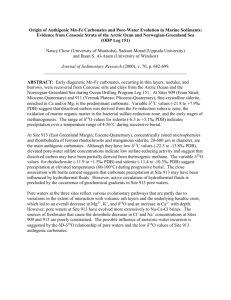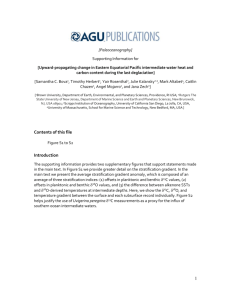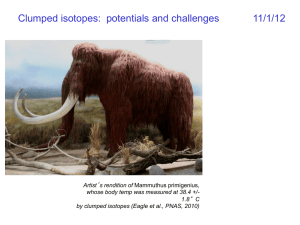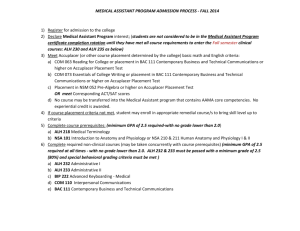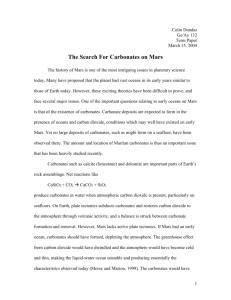PSRD-ALH84001_Carb
advertisement
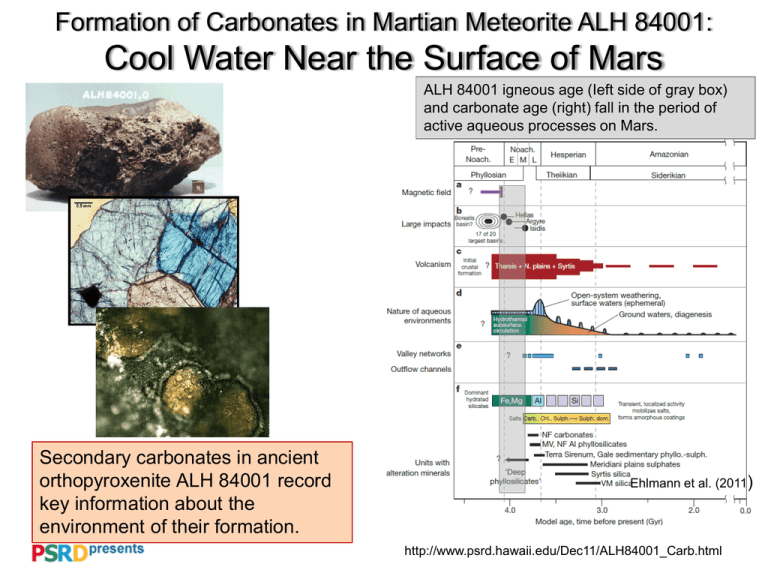
Formation of Carbonates in Martian Meteorite ALH 84001: Cool Water Near the Surface of Mars ALH 84001 igneous age (Ieft side of gray box) and carbonate age (right) fall in the period of active aqueous processes on Mars. Secondary carbonates in ancient orthopyroxenite ALH 84001 record key information about the environment of their formation. Ehlmann et al. (2011) http://www.psrd.hawaii.edu/Dec11/ALH84001_Carb.html Clumped Isotope Thermometry • Isotopologues of CO2 differ in how much 12C, 13C, 16O, 17O, and 18O they contain. • Mass 47 is useful because it contains both 13C and 18O, which have a temperturedependent preference for residing in the same molecule. • The parameter 47 derives from the abundance ratios of masses 47 and 44, compared to the value expected if the isotopes are randomly Experimental data like these and thermodynamic principles allow us to distributed among the correlate 47 with temperature. The mean isotopologues. value of ALH 84001 implies 18°C (±4) http://www.psrd.hawaii.edu/Dec11/ALH84001_Carb.html Evaporating Fluids, Precipitating Carbonates Physical Model: Fractured near-surface of Mars is saturated at some depth with water. Evaporation causes carbonates to form. Little connection with the atmosphere, so evaporation causes correlated changes in 13C and 18O. http://www.psrd.hawaii.edu/Dec11/ALH84001_Carb.html

